Josh Kilmer-Purcell's Blog, page 4
September 10, 2018
Soothing Oak Foot Bath

Not so long ago, Celtic druids made their wands from oak, a symbol of endurance and strength. They didn’t appreciate oak trees just for their tool-making, but also performed religious rites in oak groves and listened to the trees for divine messages. Back to the here and now, celestial rumor has it that oak bark is still good for a bit of magic: a soothing oak foot bath will be a welcome relief for your sweaty feet! Oak’s superpowers include being an antiperspirant, antibacterial, antiviral, anti-inflammatory, and astringent; and alleviates itching.
INGREDIENTS
3 tablespoons oak bark
4 cups cold water
INSTRUCTIONS
Bring the oak bark and water to the boil in a pot. Cover with a lid and simmer for 30 minutes on very low heat. Prepare a foot bath with warm water, and add the strained oak infusion to the bath. Enjoy for 20–30 minutes, then dry your feet and apply one of your homemade creams to complete the pampering session.
As featured in the Autumn 2017 edition of Beekman 1802 Almanac. For more check out All Natural Beauty: Organic & Homemade Beauty Products by Karin Berndl and Nici Hoffer.
The post Soothing Oak Foot Bath appeared first on Beekman 1802.
September 6, 2018
The Benefits of Being Neighborly: Our Collaborations with Brewery Ommegang

On September 5, 2018, we held a press event with Brewery Ommegang to announce the launch of our newest collaboration, Goat Milk Stout. Team Beekman hustled to turn the URBAN CO-WORKS space where we work into a mini harvest celebration. And by hustle, we mean it. Banners were hung with care, tablecloths were steamed to perfection, and it was all set up and ready to go in just under two hours. For décor, we made sure we had plenty of fall elements (it’s not a harvest celebration without a few bales of straw and some perfectly-placed pumpkins.)








Our team also used our previous collaborations with Brewery Ommegang, like our trio of beer jellies, to decorate our tablescape. Now if you had told us that full jars of jelly would make for great décor, we would shoo you away with some of our old copies of Martha Stewart Living. But the deep amber hues of the jelly were perfect to complement to our burlap-esque tablecloths. Another fun item included on our tables were coasters from the “Belgium Comes to Cooperstown” event (more on that later.) From a productive work area to rustic harvest party in under two hours— our team knocked it out of the park.
The scene was perfect to showcase this new venture— something we consider to be one of the bounties of this year’s harvest and the culmination of a lot of hard work and planning. But to understand how this event came to be, we have to go back to the beginning of what has become a wonderful partnership between two hard-working companies.
If you haven’t been a Beekman Neighbor for very long, you may not know about the 24-hour holiday marathon we have every year in December. Someone (us) had a crazy idea to stay awake for 24 hours during the last shipping day for the Mercantile and livestream the whole thing. During our 2017 marathon, Doug Campbell, the president of Brewery Ommegang, came on and we couldn’t help but pitch some beer ideas. We, running on no sleep, coffee, and a few handfuls of goat poop, thought this sounded like a great idea. Luckily, Doug understood our sleep-deprived ramblings and agreed.
Team Beekman took the idea and ran with it. We decided to come up with two different recipes— Goat Milk Stout and Pail Ale — and have our favorite taste-testers (our wonderful Beekman Neighbors) help us decide which would be the winning recipe. At this year’s Garden Party, we held our first taste test of our final two recipes, Goat Milk Stout and Pail Ale.
We also decided to kick up the collaboration up a couple of notches (because if you’re going to commit to one project, why not commit to three or four more?) So while our Brewery Ommegang was tweaking recipes and Team Beekman was creating labels, our Almanac team followed us around while Brewmaster Phil Leinhart taught us how our beer was made (to see more of this, check out “The Art of the Brew” in our Summer 2018 Almanac). Fun fact, Phil is related to Sunny Leinhart, one of our artisans.
While this was going on, we brought more Beekman to Ommegang. During Ommegang’s summer concert series, we set up our “Rare-bits” grilled cheese station. Using locally-made Heidelberg bread, our goat cheese and beer jellies, we fed the crowds grilled cheese sandwiches while they enjoyed live music on the beautiful grounds of the brewery. We also provided VIP bags with lots of Beekman goodies and plenty of amenity kits for concert goers to camped on the grounds.








This summer, our events team worked with Ommegang on their “Belgium Comes to Cooperstown” event. This annual event combines camping, rare Belgian beers and great food to create a unique experience for over 3,000 visitors. We joined Ommegang to create a special five-course, VIP dinner with decor inspired by our latest cookbook, A Seat at the Table. Our awesome events team created the perfect space under the large tent. Running up each tentpole were a variety of antique chairs, while vintage light fixtures hung down from the ceiling.

















We also had a special tasting at SAVOR: An American Craft Beer and Food Experience. After counting all the tallies (no hanging chads here), our Neighbors overwhelmingly voted in favor of the Goat Milk Stout.







When it was finally time to start bottling the winning recipe, our team was able to visit Brewery Ommegang to see the final result.
All that hard work, planning, and working together lead to our press event on September 5th. We invited some friends, we got to taste the fruits of the harvest, we got to turn our workspace into a party space. We couldn’t ask for more.






And now all of our Neighbors can experience the benefits of two great teams working together. Goat Milk Stout will be available in 12 oz-four packs and on draft for a limited time this fall (check out Brewery Ommegang’s website to learn more.) If you plan to attend this year’s Harvest Fest, don’t miss out on our Brewery Ommegang Beer Garden, where we’ll be serving up plenty of samples during our first public launch.
We’ve been farmers for a while, but we’re still stunned about what can be harvested after planting a few seeds of inspiration. Whenever we have a glass of Goat Milk Stout, we will always be toasting to the benefits of being neighborly and the great things that come from a little hard work. Cheers.

1
Spring 2017 Almanac

2
Summer 2017 Almanac

3
Autumn 2017 Almanac

4
Winter 2017 Almanac
Visit the Mercantile
The post The Benefits of Being Neighborly: Our Collaborations with Brewery Ommegang appeared first on Beekman 1802.
Attention All Mini-Artists!
We’re searching for a few awesome “Beekman” inspired drawings to use as coloring pages for our younger neighbors at Harvest Festival this year. If you’re interested in having your mini Picasso or mini Kahlo’s artwork come off the fridge and into the Village, please follow the directions below.
Directions:
Black and White drawing to fit standard copy paper (8 ½” x 11”)
Must be original work created by someone under the age of 18 and kid-friendly. (We know, but we have to say it.)
Submit to contest@beekman1802.com
DEADLINE to submit: 9/11
The post Attention All Mini-Artists! appeared first on Beekman 1802.
August 31, 2018
18(+02) Interesting Facts about Pickles
Canning and pickling are in my blood. From July to September, you’ll find me sterilizing jars, simmering sauces, and turning every wayward vegetable scarp into a pickle.
Maybe I owe my stubborn canning habit to my Midwestern upbringing. My college friend Tiffany used to travel home to Eastern Michigan on early autumn weekends to help her family preserve the food grown on her family farm. She, her mother, and aunt would gather in her Grandma Stella’s basement, which was specially outfitted for canning. They sweated away their weekends filling caseloads of jars which were then split evenly amongst the relatives. Towards the end of our college years, Tiffany’s mother, Jude, fell ill with cancer. But even in her weakened state, Jude would lay on the couch in the canning kitchen and direct the others.
Fifteen years ago, after both Tiffany’s mother and grandmother had died, the family gathered to clean out the canning kitchen. To Tiffany, these jars were the most precious jewels she could have inherited. She would be able to eat meals made by her mother’s hands long after the final time she’d held them.
Preserving food has never been just about staving off winter starvation. If we have nothing saved for tomorrow, we’ll also have nothing to leave behind.


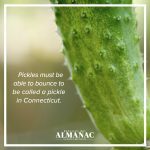

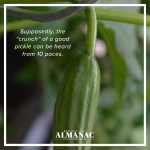
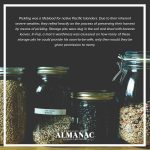
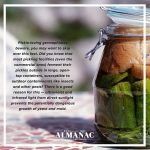




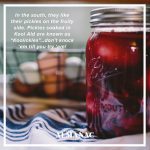
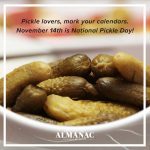

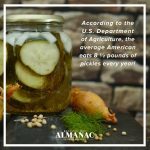


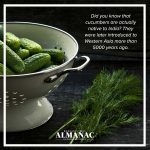
What is an 18(02) post without your bonus 02!


The post 18(+02) Interesting Facts about Pickles appeared first on Beekman 1802.
18(+02) Most Haunted Places to Visit
In central New York, there’s never a shortage of places you can go to get the life scared of out you. Within a half hour drive of the Beekman Mercantile, there are plenty of haunted houses, haunted caverns, and even haunted farms (we try to plan trips to these creepy locations during the fall, but we get scared easily). It comes with the territory. Many houses in Schoharie County were built before the United States had even formed. It makes sense that some of the people who built and lived in these homes want to hang on as long as they can. We can’t blame them. We understand the feeling of building something wonderful and never wanting to leave. Read on to learn about the most haunted places around America and plan a trip to get your spook on.



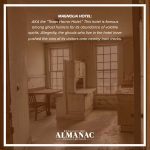
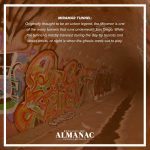



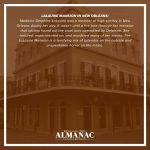



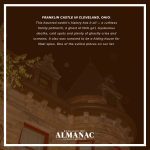

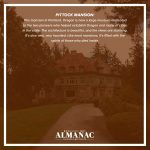



It was hard to narrow down to just 18. Luckily, we have the bonus 02.


The post 18(+02) Most Haunted Places to Visit appeared first on Beekman 1802.
18(+02) Famous Ghosts
Before we moved to the Beekman Mansion, we had always been a bit skeptical of ghosts. In New York City, most weird happenings could be explained away easily. Loud crash in the middle of the night? Probably a downstairs neighbor coming home after a few too many cocktails. Ghostly figures on the subway? Usually Shakespeare in the Park actors who were too tired to change out of their costumes. Wake up in the middle of the night in a cold sweat? That’s just the regular ol’ fear-of-middle-age kicking in.
However, none of these things could be logically explained when we witnessed them happening at the mansion. Since then, we’ve welcomed our ghostly visitors and made peace with the other side. We’ve also spent a lot time studying other ghouls, spirits and poltergeists, so read on to learn more about some of the most interesting and famous ghosts to ever haunt America.
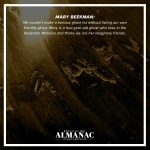

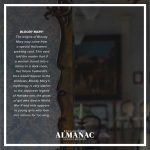



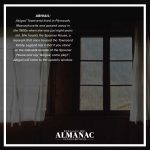
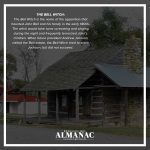

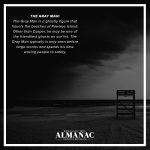








It was hard to narrow down to just 18. Luckily, we have the bonus 02.


The post 18(+02) Famous Ghosts appeared first on Beekman 1802.
18(+02) Facts about Pumpkin-Spiced Foods
With how much craziness there is over pumpkin spice, it’s easy to overlook that it actually tastes good (in limited quantities.) The negative association with pumpkin spice and being “basic” takes away from the fact that pumpkin is good, pumpkin pie is even better, and a PSL isn’t the worst thing you could order from Starbucks. So, put on a sweater, grab your pumpkin-flavored whatever and embrace this seasoning that is as much loved as it is maligned. All we ask is that you stop breaking out the pumpkin stuff in August, that’s just ridiculous.







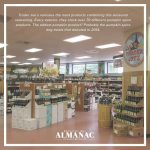
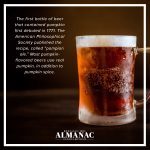





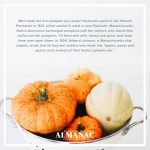



It was hard to narrow down to just 18. Luckily, we have the bonus 02.


The post 18(+02) Facts about Pumpkin-Spiced Foods appeared first on Beekman 1802.
August 23, 2018
Beekman 1802 Makers Potluck Picnic
On Saturday, August 11, we had a potluck picnic with our makers. Over 50 of our Beekman 1802 makers and their plus-ones braved the humid, rainy afternoon to meet, greet and be merry. We asked for everyone to bring a dish to pass and they did not disappoint (They aren’t just great at making artisan pieces, they also can cook a to-die-for goat cheese and fig tart). Our makers brought plenty of homemade salads, appetizers and so, so many desserts (Shout out to the lemon-blueberry cupcakes).
Products made by our artisans were a part of the picnic as well. Wine and cocktails were served in Glass blower Bobby Sharp’s smoked-glass champagne flutes. Chocolate maker Pam wouldn’t let anyone leave without making sure they had a taste of her bourbon caramels. Java Love Coffee Roasting Co (Makers of our Mohka Java Mercantile Blend aka our lifeblood) brought cold brew on tap, using one of the smartest serving contraptions we’ve ever seen.
It was great to see these people, who are such an important part of the Beekman 1802 story, be able to take a day off from creating (Which even if you love to do it, is still work) and connect with other artisans to share ideas, tips and even discuss possible collaborations.
Not a bad way to spend a Saturday.



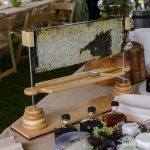











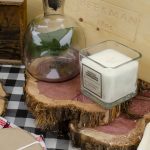







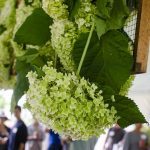
The post Beekman 1802 Makers Potluck Picnic appeared first on Beekman 1802.
August 21, 2018
The Dirty History of Making Bar Soap

Our pure goat milk soap was our very first creation for Beekman 1802. Unfortunately, we were not soap-savants when we started out. Creating our first bars of soap required a lot of trying, failing and studying to understand the ins and outs of producing high-quality bar soap.
One thing we learned in our studies is that there’s a dirty side to the history of soap. From secret recipes to government-mandated monopolies, bar soap started from humble beginnings and soon became a worldwide luxury. The history of soap is long and winding, so let’s jump right in.
So how old is soap?
Imagine that you live in ancient times. The rising sun wakes you up and you get to your daily work. After a long day of hunting, gathering and communicating with your neighbors, it’s time for a shower. You take out your block of clay and scrub, scrub, scrub. Don’t like clay? Well you could use some pumice, maybe a little sand if you’re feeling frisky.
This may seem confusing to you, but during the B.C. years, this was how you got clean. If you bothered to clean yourself at all.
One of the most surprising facts about the history of bar soap is that, for a very long time, soap wasn’t for bodies. One of the first recorded uses of a soap-like substance was in 2800 B.C. Babylonians used a mixture of ash and animal fat to clean things around their dwellings. It was mostly used on textiles and tools. Eventually, as the recipes for these soap substances were passed along tribes and trade routes, it began to take on a bigger role in cleaning primitive field equipment and used during medical procedures.
Ancient societies experimented with a variety of materials to create soap that could keep their tools clean. Generally, the ingredients were some type of animal fat, a variety of oil and salts. Many followed the lead of the Babylonians and mixed ashes leftover from cooking fires with leftover animal fat. Ancient Egyptians poured alkaline salts into an animal fat and vegetable oil mixture to get their cleaning done. Phoenicians used goat tallow, while ancient Germans used tallow and ash in a potent combination that not only cleaned but would also dye materials.

What we know as soap today took a very long time to get into our bathing rituals. Back in the day, bathing was more of a luxury than a necessity. Ancient Egyptians and Romans are some of the first to record using baths, but bathes were only used on special occasions or medicinally. The people who would bathe the most usually had to so because they needed to keep a wound clean.
The ancient Greeks’ bathing rituals usually involved scrubbing the body with clay or pumice, then anointing oneself with oils. Then they would take out a metal instrument called a strigil and scape off the oil and dirt.

Who made bar soap?
Bar soap as we know it today didn’t start popping up until the seventh century. According to historical documents, soapmakers were starting businesses in Spain, France and Italy. England followed in the 12th century, and soon bathing with a bar of soap became a trend. This led to a surge in use of bar soaps across Europe and a surge in pricing.
During the Restoration era in England, the English monarchy introduced a soap tax, officially making bar soap a luxury item. King Charles I had previously granted the Society of Soapmakers of Westminster total control over large-scale soapmaking in England, so this new tax raised soap prices even more. Strict rules were place on where, how and when soap could be manufactured.
These restrictive practices trickled down from factories to independent artisans. Since it was difficult to make soap anyways, small groups of artisans banded together and formed exclusive groups. They kept their soapmaking ways a secret, not only to create a monopoly on artisanal soap, but also to reap the benefits of the high market prices.
But soon, the soap conglomerate fell. The Society of Soapmakers of Westminster lost their monopoly on production, the soap tax was repealed in 1853 and chemists had created easier ways to mass produce bar soap. The reign of luxury soap was over by the 1900s. With soap production on the rise and prices falling, bar soap finally made its way into modern hygiene.
Bar soap today
Soap is so common today that the word soap is used to describe all different types of cleansing products. Most items that we call soap aren’t soap at all, they are actually detergents. Detergents, also known as surfactants, are created by synthetic compounds. Detergents initially were created out of necessity during times where traditional soap ingredients were scarce, like during World War I.
In its most basic form, soap is a mix of a fat and an alkaline. To be legally called soap, it needs to contain a variation on these two ingredients. Other than these two ingredients, an endless amount of materials can be added.

There are some benefits to using bar soap versus non-soap bars and detergents. The reasons ancient societies used a mixture of oils, fats and salts to clean important items are still true today. This combination of ingredients is very efficient at getting things clean. Studies have shown that bar soap does a better job removing dirt, oil, makeup and other impurities from skin. Bar soaps are also created with simpler ingredients and can be easier to use for people with sensitive skin and allergies.
But there are some downsides. The ingredients in bar soap are great at removing oil, but sometimes they can be too great at removing oil, resulting in dryness. That’s why at Beekman 1802, we chose ingredients in our soap that are natural and less likely to irritate your skin, starting with our goat’s milk and finishing with ingredients like oatmeal and sweet grass.
So, when choosing a bar soap, make sure it contains gentle ingredients and when in doubt, patch test!
Modern bar soaps may be more elegant than their ancient counterparts, but it’s important to remember the humble beginnings of this wonderful product.
The post The Dirty History of Making Bar Soap appeared first on Beekman 1802.
The Dog Days of Summer: An Intro to Skywatching

For Sharon Springs, the real dog days of summer start right at the beginning of July and can last all the way through August, if the weather is hot enough. It’s not just because the temperature gauge is spiking up, but it’s also when our humidity levels and dew points reach “tropical” stage (Mind you, this is the scientific term. There’s nothing tropical about walking around and feeling like you are trapped in a can of condensed soup.)
The ancient Greeks and Romans called this sultry time of season “dog days” because it followed the rising of the star Sirius aka Canis Majoris aka the star that was supposed to represent a big, black hellhound. Sirius was apparently a real hell-raiser in his day and was said to be the reason behind heat waves, lethargy, bad luck, thunderstorms, fevers and even literal mad dogs.
So, what do we do during these dog days of summer? Well, it’s the same as how we spend a lot of our time— traveling, working and farming. But during the evening, when the humidity lessens up and it’s finally a little cooler outside, we like to take up one of our favorite hobbies, stargazing. We even like to take our version of Sirius with us. Luckily for us, Önder isn’t a hellhound (But she can raise hell if she’s been cooped up all day.)
Now, you don’t need anything special to get into this hobby (Just your eyeballs and a dark, cloudless night) but in our experience, adding a few tools makes our sky-watching efforts a little more fun.
The tools

A phone: Everywhere we travel (and you know we travel a lot), Josh will always pull out his phone and fire up the SkyGuide app and see what constellations are overhead (We’re not sponsored by the app, Josh just loves it that much.) Since we always have our phones with us, having a sky-watching app at the ready makes astronomy that much easier.

The Library: We know, it’s obvious, but libraries really are great for beginning stargazers. Beyond checking out a book about Astronomy 101, many libraries also have locally-generated sky maps. These guides can help you find your way around the atmosphere when you’re out in the field (Especially when you don’t have service or Wi-Fi).

Binoculars: When you think of searching for stars, the most obvious device to have seems to be a telescope, but here’s why binoculars are a better choice. They are more portable, cheaper and easier to use on a whim. Telescopes need to become acclimated to the air temperature around them to be able to perform at their best. With binoculars, you can take them out anywhere to see what’s in the night sky.

A notebook: If you really want to get into the nitty-gritty of sky watching, the best way is to keep a record of what you see, the distances between constellations (More on how to figure that out below) and your location. A journal, preferably with a protective cover, is great to have on hand.

Protection from the elements: For the northeast, summer means ticks, mosquitoes and other creepy crawlies just waiting to hitch a ride on an unsuspecting bystander. Make sure to protect yourself by wearing pants to protect your gams (especially if you plan on walking through tall grass aka a tick highway) and plenty of bug spray. When you come back in for the night, make sure to give your body a once-over to check for any unwanted guests.
Getting started
So, you’ve got your tools, you have your app loaded up on your phone and you want to go star gazing. Where exactly do you start?
First, you need to make sure you are far away from sources of light pollution (This is one of the reasons Sharon Springs is so perfect for stargazing. 547 people don’t need a lot of light compared to a city.) Light pollution is the brightening of the sky because of man-made light sources (like street lights, cars, etc.). It’s estimated that 80 percent of the world’s population lives under skyglow, a component of light pollution that brightens the night sky. If you’ve ever seen a night sky with an orange-cast to it, you’re looking at skyglow. Researchers have put together a map that shows you how much light pollution is in your area, you can check that out here.

Once you’ve found an area that’s nice and dark, it’s time to start finding some stars. For us in the northern hemisphere, the easiest one to find is the Big Dipper (We like to call it the gateway constellation, once you find that one, you can hop around the stars and find other constellations easy-peasy). The Big Dipper and the Little Dipper are arranged in the sky so that when one is upright, the other is upside down. Other constellations near the Big Dipper (and can only be seen in the northern hemisphere) are Cepheus (known as the king. It kind of looks like a house) and Cassiopeia (aka the queen. This constellation looks like a spread-out W.) Our favorite constellation in the southern hemisphere is Capricornus, a constellation that looks like a goat’s head (complete with two horns) and represents a mystical creature that is half goat and half fish.
Another way to find out where constellations are is by measuring the sky. How exactly do you do that? All you need is a hand and an outstretched arm. Your fist held out at arm’s length covers about 10 degrees of the sky. The three fingers in the middle of your hand is about five degrees of distance and your pinky measures one degree of distance. You’ll probably look weird holding your arms out in front of you to measure between stars, but it’s an easy way to find constellations. Also, if you’re out in the field in the middle of the night with a notebook and binoculars, you already look a little weird. Just lean into it.
So you’re all ready to go. You have your bug spray, your binoculars, your star map and your journal. It’s time to go out into that clear, dark night and get your hobby on. But what happens if you’re all prepared but it’s too cloudy to see a thing? This is where you take out your final tool, a blanket. Spread it out, grab your loved one and enjoy the beauty of a cloudy summer night.
The post The Dog Days of Summer: An Intro to Skywatching appeared first on Beekman 1802.



